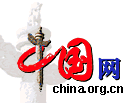|
While China's accession to the World Trade Organization (WTO) and the launch of the euro will boost trade between China and the European Union (EU), they also raise new problems and challenges.
Since the early 1990s, the EU-China trade relations have entered a new stage, thanks to the ever improving EU-China political relations.
In 1994, the EU launched its new Asia strategy and issued a series of China-oriented policies.
In 1995, the EU passed a document "A Long Term Policy for China-Europe Relations.'' The landmark 1998 "Building a Comprehensive Partnership with China,'' raised China's trade status with the EU to a level of equal importance to that of the United States, Russia and Japan.
In May and September, 2001, the "EU Strategy towards China: Implementation of the 1998 Communication and Future Steps for a More Effective EU Policy'' and the "Europe and Asia: A Strategic Framework for Enhanced Partnerships,'' further highlighted the increasing trade capacity between EU and China. For that reason, the two documents suggest, the EU further its political dialogue with China to promote bilateral economic and technological exchanges.
Due to the mutual efforts made by the two sides, bilateral trade has increased 29 folds. The EU has become China's second largest market when it comes to China's imports and the fourth largest market when it comes to exports. China has become the EU's third largest trade partner, behind the United States and Japan.
China's WTO entry gives new impetus to EU-China trade growth.
The entry provides effective institutional and legal guarantees for bilateral trade.
The WTO rules stipulate that its members should abide by the principle of non-discrimination and most favoured nation treatment, which, in the case of EU-China trade, includes tariff reduction, a lift of imports quota restrictions and easing market entry criteria.
The solution to the WTO trade dispute will also be conducive to the solution of trade disputes between the two sides.
China's WTO membership will push the country to further open its markets, improve investment environments and provide foreign investors with national treatment.
According to the WTO rules, China is committed to reducing tariffs on 150 varieties of industrial products from the EU. It will open the farm produce market and allow the EU to enter its tertiary sector.
Meanwhile, the EU will take measures to open wider its market to China. This year, anti-dumping cases against Chinese products have significantly decreased. It also partially lifted restrictions on the entrance of China's farming and sideline products.
The launch of the euro, in the mean time, is another driving force for the growth of EU-China trade.
The euro's so far good performance has put the US dollar under great challenge and has eased China's dependence on the US dollar in foreign trade settlements.
Now that the euro has integrated the European currency system, the risks in China's EU-related transactions, incurred from changes in the foreign exchange rate of different European countries' currencies, will be reduced.
The integration of the European currency system enables Chinese exporters to orient their business to one integrated euro zone, instead of several individual countries, thereby saving transaction costs.
But China's entry into the WTO also brings potential obstacles for bilateral trade.
While advocating globalized free trade, the WTO exception principle allows its members to take certain protective measures to shield domestic enterprises from outside competition.
For example, the EU's anti-dumping mechanism against China will last for another 15 years. Its technological trade barriers and quota restrictions remain the major obstacles for China's exports to the EU.
Due to its low technological level, China will not be able to meet the EU's technological standards in the short term. And the euro's launch has further complicated the issue, adding more uncertainties and trade frictions.
The structural duality poses challenges to China's exports to the EU.
Following the integration of EU economies, the organization gradually develops into a dual-structure entity -- individual EU members and a single EU zone. In terms of imports, the EU countries will adopt integrated EU import criteria while they carry out flexible policies to expand their exports and protect domestic markets.
The close economic relations and similar financial standards among the EU members tend to produce trade barriers and protectionism.
Besides, the EU members have different economic levels. It may protect those members with low economic levels and become slow in opening certain markets to the outside.
Challenges for China's exports to the EU also come from the launch of the euro.
If the euro cannot remain stable, it will affect a stable, EU-China trade.
In a time when EU members are free to use their own currencies, China can adapt the price of products to the different market conditions of the EU member countries. After the launch of the euro, the differentiated price policy will not work.
And an integrated euro system will enable EU member countries to increase trade with each other, instead of with non-EU countries. China's exports do not have advantages in quality and after-sale services. Its competitiveness will be weakened in these conditions.
Moreover, the launch of the euro lessens the conversion costs and reduces the financial risks within EU enterprises. In return, they will be more price-competitive.
The author is a researcher with the China Institute of International Studies.
(People's Daily April 1, 2002)
|

